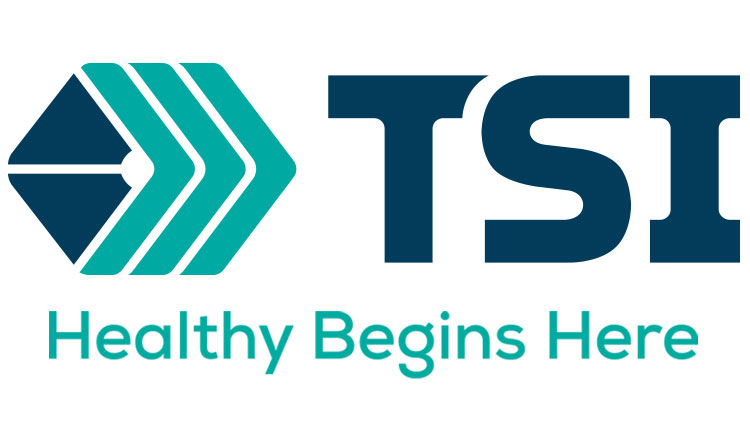Promotional Features
Long-term weight management and quality of life may depend on preserving muscle, clinical studies show
Maintaining muscle mass is critical to long-term weight management.
Rapid weight loss from the use of glucagon-like peptide 1 (GLP-1) receptor agonists can have profound unwanted consequences. While these drugs can help people lose fat, those taking GLP-1s also risk an unhealthy loss of lean muscle mass which can lead to a host of other health and quality of life issues. This can make maintaining weight loss more difficult.
Widespread attention is turning to Calcium β-Hydroxy-β-methylbutyrate or HMB (myHMB®) because published human clinical studies support its ability to safely help preserve, or even gain, muscle mass even while restricting calories.
GLP-1s do not directly cause muscle loss
GLP-1s significantly reduce appetite, resulting in extreme calorie restriction. In response, the body breaks down stores of fat and muscle for energy. A 68-week clinical trial of semaglutide, the active ingredient in GLP-1s, found that on average, participants lost approximately 23 pounds of fat and 15 pounds of lean muscle.1
Without multiple diet, exercise and nutritional interventions, the resulting muscle loss can be severe. This is an especially critical consideration for the more than eight million American adults aged between 65 to 74 who are obese and who may already be experiencing the detrimental effects of age-related muscle loss.2 Using GLP-1s may further accelerate their muscle decline.
NIH-funded research shows that adding myHMB® plus Vitamin D3 to daily protein intake will support muscle health in older adults, even without exercise.3,4
Adequate muscle mass is essential for maintaining a healthy weight
Muscle mass is essential in addressing weight management. “Muscle loss impacts your body’s ability to burn calories and interferes with weight-loss efforts. Conversely, people with plenty of muscle burn calories even as they sleep,” confirms Naji Abumrad, MD, FACS, an award-winning educator and NIH-funded muscle health researcher.
Some may think taking GLP-1s will help to build healthy habits. However, having less muscle may make it more difficult to find the energy to follow through on your goals, cautions research scientist Shawn Baier, MS, M.B.A., whose work at TSI Group focuses on maintaining muscle health. “Plus, once GLP-1s are discontinued, appetite may return with a vengeance.”
Without diet and lifestyle, weight tends to be regained and it may be composed of even more fat. Without muscle to fuel the metabolism, that fat will be even harder to lose the next time. Body composition can suffer as a result.
Boosting protein intake can be challenging while taking GLP-1 drugs
During any weight loss program, it is incredibly important to supplement a diet with plenty of protein to help preserve existing lean muscle, even though protein alone may not be enough to stop muscle loss.
Protein intake can be even more problematic for those taking GLP-1 drugs. “People taking these weight-loss drugs have almost no appetite because that signal is turned off. They just do not want to eat. It is hard to find a food they can tolerate,” explains Baier.
“Even if they manage to drink a couple protein-fortified shakes a day, they are unlikely to get enough protein or the micronutrients their bodies need.”
Concerns about declining muscle mass are cross-generational
Muscle is critical to overall mobility, strength, balance and the ability to participate in everyday activities. “Involuntary age-related muscle loss affects everyone, beginning as early as age 30. Without effective intervention, this gradual muscle loss increases risk of falls. It slows the ability to recover from illness and injuries. Ultimately, an individual’s independence may be in jeopardy,” observes Baier.
While there may be many important benefits of weight loss metabolically, it is important to consider how decreased lean muscle mass can impact younger generations. “Now that younger adults are using GLP-1s to initiate weight loss – and they start losing muscle mass at an earlier age – the concern is how this will impact them years down the road,” concurs Baier.
Research indicates myHMB® helps preserve muscle mass
“HMB helps maintain muscle and utilize fat storage. It is better than any other ingredient at keeping the muscle machinery in balance,” says Abumrad, who was instrumental in developing this nutrient.4
“It helps maintain healthy muscle, even during dramatic reductions in calorie intake.”
Published human clinical studies centered around reduced caloric intake, such as intermittent fasting, found that fat stores are reduced while muscle mass is maintained in subjects consuming HMB.5 HMB has a unique dual mechanism of action, promoting both muscle protein synthesis while also reducing muscle protein breakdown. This makes it one of the most efficient nutritional aids for preserving muscle mass.
For additional information about the advantages of formulating with visit myHMB.
References
1. Wilding, JPH.; Batterham, RL.; Calanna, S.; et al. (2021). Once-weekly semaglutide in adults with overweight or obesity. N Engl J Med 2021;384:989-1002.
2. Fakhouri, TH.; Ogden, CL.; Carroll, MD.; et al. (2012). Prevalence of obesity among older adults in the United States, 2007-2010. NCHS data brief, no 106. Hyattsville, MD: National Center for Health Statistics.
3. Rathmacher, J. A.; Pitchford, L. M.; Khoo, P.; et al. (2020). Long-term Effects of Calcium β-Hydroxy-β-Methylbutyrate and Vitamin D3 Supplementation on Muscular Function in Older Adults With and Without Resistance Training: A Randomized, Double-blind, Controlled Study. The Journals of Gerontology: Series A, Volume 75, Issue 11, Pages 2089–2097.
4. Wilson, G. J.; Wilson, J. M.; & Manninen, A. H.; (2008). Effects of beta-hydroxy-beta-methylbutyrate (HMB) on exercise performance and body composition across varying levels of age, sex, and training experience: A review. Nutrition & metabolism, 5, 1.
5. Tinsley, G. M.; Moore, M. L.; Graybeal, A. J.; et al. (2019). Time-restricted feeding plus resistance training in active females: a randomized trial. The American journal of clinical nutrition, 110(3), 628–640.






